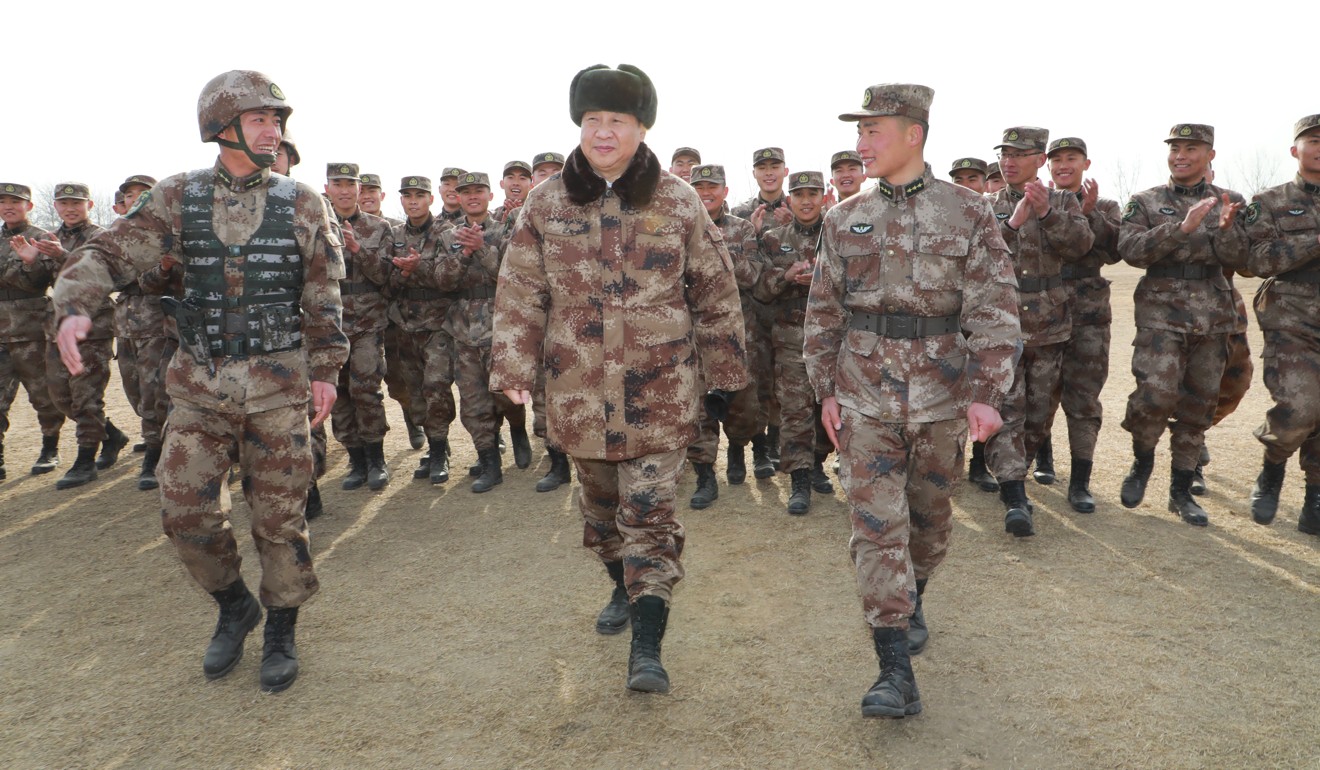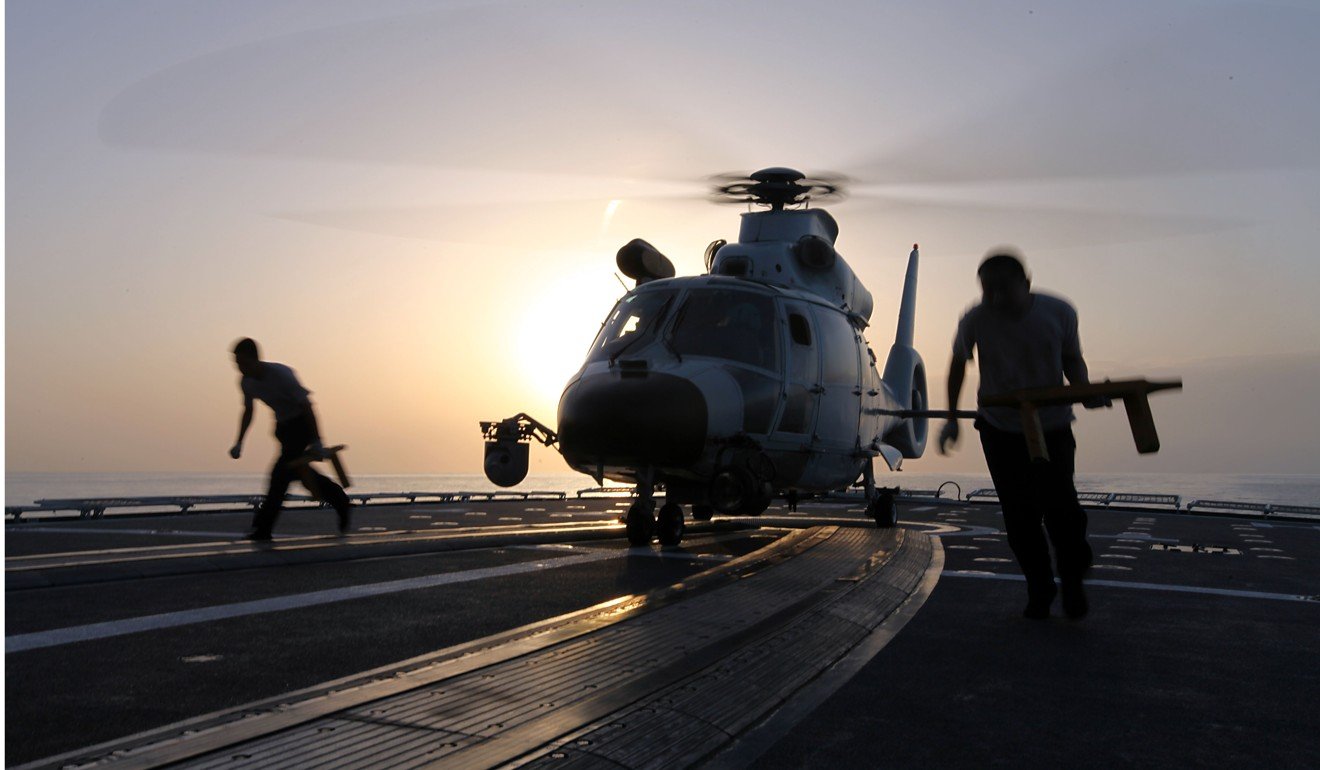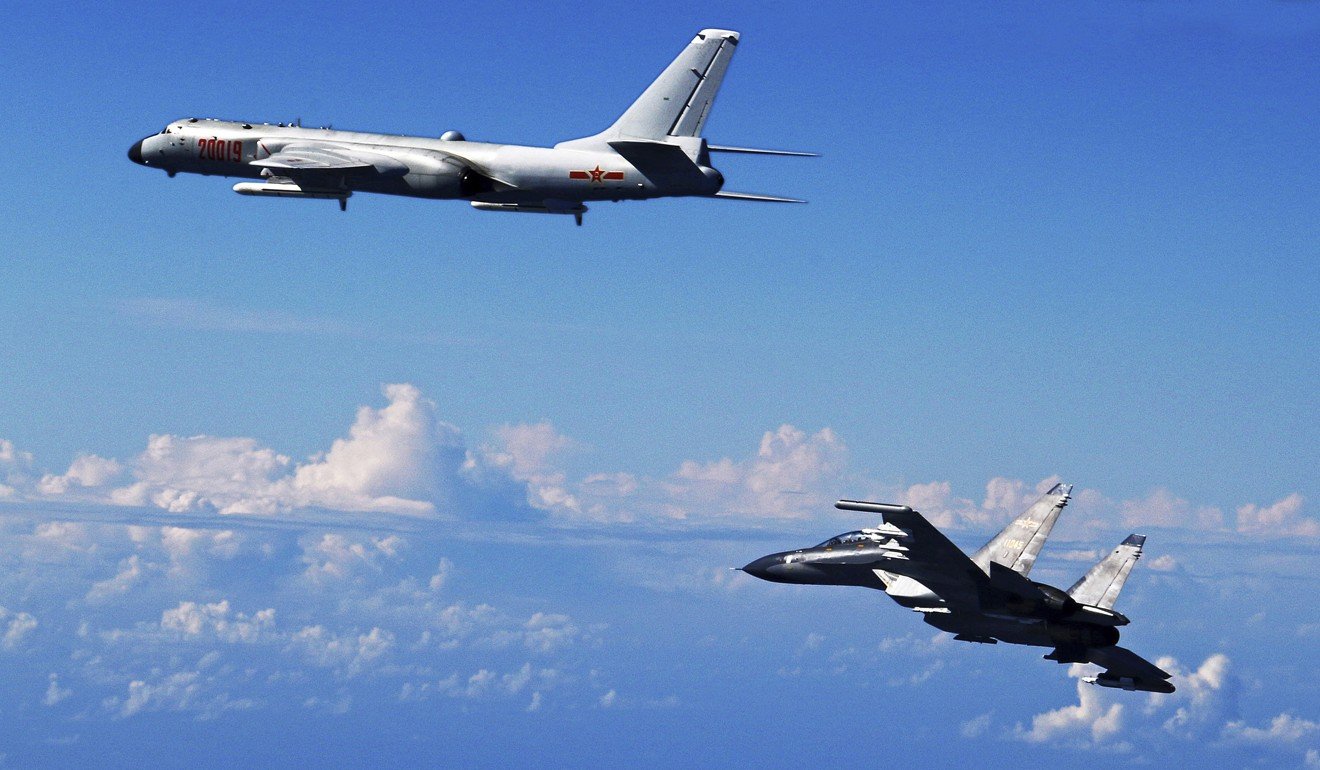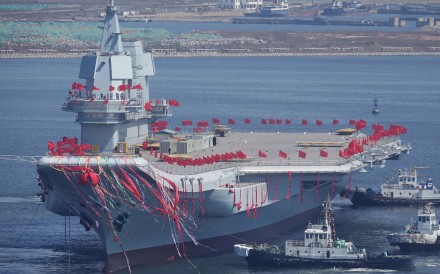Kristin Huang
 The three young men were not playing a computer game, but soldiers with a special People’s Liberation Army (PLA) brigade undergoing combat training as China’s military ramps up the quantity and quality of its exercises.
The three young men were not playing a computer game, but soldiers with a special People’s Liberation Army (PLA) brigade undergoing combat training as China’s military ramps up the quantity and quality of its exercises.
Li hid in a river to evade a surveillance drone, while Liu hit 24 targets after fixing his broken rifle in a matter of minutes, the army mouthpiece PLA Daily said in a January 11 report on the training, designed to boost the soldiers’ fighting skills and spirit.
It said commanders of the brigade, part of the PLA’s Guangdong-based 74th Group Army, were ordered to rectify seven problems identified during the exercise that would have made it less effective in a real war.
The PLA has stepped up its training efforts since President Xi Jinping became Communist Party general secretary and chairman of its Central Military Commission (CMC) in late 2012, in line with his plan to turn it into a modern fighting force capable of conducting long-range power-projection operations.
In 2013, the army and paramilitary police planned nearly 40 training exercises, China News Service reported.
 But in the past two years, the PLA alone conducted at least 45 exercises a year, according to data complied by the South China Morning Post, and it staged them in more complex and harsher conditions on land, at sea and in the air.
But in the past two years, the PLA alone conducted at least 45 exercises a year, according to data complied by the South China Morning Post, and it staged them in more complex and harsher conditions on land, at sea and in the air.
Alongside his military modernisation drive, which also includes a boost to military research and development efforts designed to close the weapons gap with the United States and Russia, Xi has also demanded absolute loyalty and obedience to the party from the 2.3 million-strong PLA and 1.5 million-strong People’s Armed Police, which was placed under the direct control of the CMC this year.
Analysts say China’s growing economic interests overseas as a result of its Belt and Road Initiative, a trade-development scheme connecting about 80 countries across three continents, mean its military will need to be able to be protect Chinese projects and workers around the globe.
Meanwhile, at home, the top leadership has targeted pervasive corruption in the PLA that threatened to undermine China’s ability to wage war. In the past five years, 13,000 PLA officers, including more than 100 generals, have been investigated and disciplined.
The sweeping reforms can be traced to the Instructions for Political Work in Military Training, issued in early 2013, which called on the armed forces “to vigorously cultivate a combat spirit of, first, not fearing hardship and, second, not fearing death”.
Chinese military expert Li Jie said the PLA had stepped up its military training under Xi’s leadership.
“China has not fought in any war for decades, while the US has trained its soldiers in many overseas war zones,” he said. “Only through an increased amount of training set in conditions close to real war can the PLA gain effective combat readiness.”
Another Beijing-based military analyst, Zhou Chenming, said China had begun stepping up its military training under Xi’s predecessor, Hu Jintao, but was now more confident about letting the world see its combat capabilities.
“The reasons outsiders only began to notice the increased frequency and improved quality of PLA training from 2013 were that the US demanded more transparency from the Chinese military and that President Xi Jinping is more confident about giving PLA exercises a higher profile, something that can help Beijing send messages to neighbouring countries and Taiwan,” he said.
But even though the PLA has increased the number of training exercises in recent years, it still trails the West’s Nato alliance. Around 100 Nato exercises were planned last year, along with 149 national exercises by member countries, according to a fact sheet released by Nato in May.
Those Western forces, and the Russians, have also been involved in actual conflict much more recently than the PLA, which last fired a shot in anger in the 1979 Sino-Vietnamese war. A veteran of that brief campaign, General Li Zuocheng, was appointed chief of the CMC’s Joint Staff Department in August, replacing General Fang Fenghui, who is now facing corruption charges.
The PLA’s improved training regime has seen the navy and air force conduct exercises further from China’s coast. The Chinese aircraft carrier Liaoning conducted exercises with J-15 fighters in China’s Bohai region in January 2016, while Chinese warplanes flew through the Tsushima Strait, between Japan and Korea, for the first time last month, prompting Japanese and South Korean fighters to scramble in response.
Recent state media reports have also revealed how the PLA is now honing the combat abilities of all its forces year round in a variety of locations, enhancing their ability to cope with adverse weather, difficult terrain and battlefield confusion.
 In January 2016, marines were sent to a desert in Xinjiang to “further enhance their ability to carry out missions in wider space and more complex environmental conditions”, PLA Daily reported.
In January 2016, marines were sent to a desert in Xinjiang to “further enhance their ability to carry out missions in wider space and more complex environmental conditions”, PLA Daily reported.
In December that year, soldiers in an armoured brigade practised passing live explosives from hand to hand and hiding in a hole as a tank rolled overhead to prepare themselves mentally for war, China Central Television reported.
In August last year, air force pilots practised nighttime attacks in fighter jet drills in the South China Sea. In October, a rocket force in southern China discovered during routine training that its orders were too long and unclear for use in wartime. In mid-November, land troops stationed in China’s icy north trained on islands in the tropics to improve their ability to cope with climatic extremes.
PLA troops have also conducted live-fire drills at China’s first overseas military base, which opened in Djibouti in August.
They have also enhanced their combat readiness by training with forces from other countries, joining the biennial, US Navy-led Rimpac exercises around the Hawaiian Islands and holding joint drills with Russia, Kazakhstan, Pakistan, India and other countries.
Close observers of the Chinese military say the PLA’s improved and more frequent training in recent years has helped promote inter-services integration and made it more agile in responding to national defence needs.
“We saw more air-land-sea mobilisation training, involving strategic lift of massive numbers of troops and materiel across vast distances, at the theatre level, and also more inter-fleet training in the navy, as well as other instances of joint exercises involving multiple armed branches and services,” said Collin Koh, a maritime security expert at Nanyang Technological University in Singapore.
However, Timothy Heath, senior international defence researcher at America’s Rand Corporation think tank, cautioned that the intensified training could be viewed as a potential challenge to the strategic security environment or even a threat, especially by China’s neighbours.
“Powerful countries almost always spur anxiety among their neighbours,” he said. “China’s focus is mostly on non-war missions and thus it can help ease some anxiety by stepping up efforts to combat non-traditional threats, but there is no escaping the reality that some of China’s neighbours will be alarmed and will likely boost their self-defensive capabilities in response.”
Koh said the higher profile given to PLA exercises was designed for both external and domestic audiences.
“It projects Beijing’s image and stature overseas, helps defend a country’s national interests through the threat and use of armed force, boosts national pride amongst Chinese people,” he said.
However, Koh said, it was “not fully reflective of the effectiveness of its actual performance in real operations, since political control over the PLA has also tightened”.
In early November, following the previous month’s Communist Party national congress, at which “Xi Jinping Thought on Socialism with Chinese Characteristics for a New Era” was written into the party constitution, the CMC ordered the PLA to take Xi Jinping Thought as guidance and follow the absolute leadership of the party, Xinhua reported.
Heath agreed that political and geopolitical factors were at play.
 “First, as the armed wing of the Communist Party, Xi’s focus on improving the ruling party’s overall effectiveness as a governing party and reducing corruption meant the PLA also needed to improve its overall effectiveness and reduce corruption,” he said. “Second, as a great power with global interests, China will likely rely on the military to carry out more missions, some of which are beyond China’s borders, than in previous years.”
“First, as the armed wing of the Communist Party, Xi’s focus on improving the ruling party’s overall effectiveness as a governing party and reducing corruption meant the PLA also needed to improve its overall effectiveness and reduce corruption,” he said. “Second, as a great power with global interests, China will likely rely on the military to carry out more missions, some of which are beyond China’s borders, than in previous years.”
China’s military modernisation drive and expanded maritime ambition had led South Korea and Japan to consider basing F-35B short take-off and vertical-landing stealth fighters on amphibious assault ships, CNN reported last month.
Days earlier, two PLA Air Force H-6K bombers, two Su-30 fighters and a Yun-8 transport aircraft had passed through the Tsushima Strait and entered the Sea of Japan in what air force spokesman Shen Jinke described as “a routine operation”.
Macau-based military commentator Antony Wong Dong said the intensified training was aimed at deterring pro-independence forces in Taiwan and giving the PLA the wherewithal to retake the island if necessary. Beijing considers Taiwan a breakaway Chinese province and has never renounced the use of force as a means of reunification.
China has stepped up military exercises focusing on the island, with advanced bombers and fighters conducting “encirclement” patrols recently.
“Since half of the training targeted Taiwan implicitly or explicitly, a war, if it’s to break out one day, is most probably going to be a war to bring the island back to Beijing,” Wong said.
Relations between Beijing and Taipei have deteriorated since Tsai Ing-wen from the independence-leaning Democratic Progressive Party became the island’s president in 2016. She vowed last month to boost the island’s defence budget.

No comments:
Post a Comment